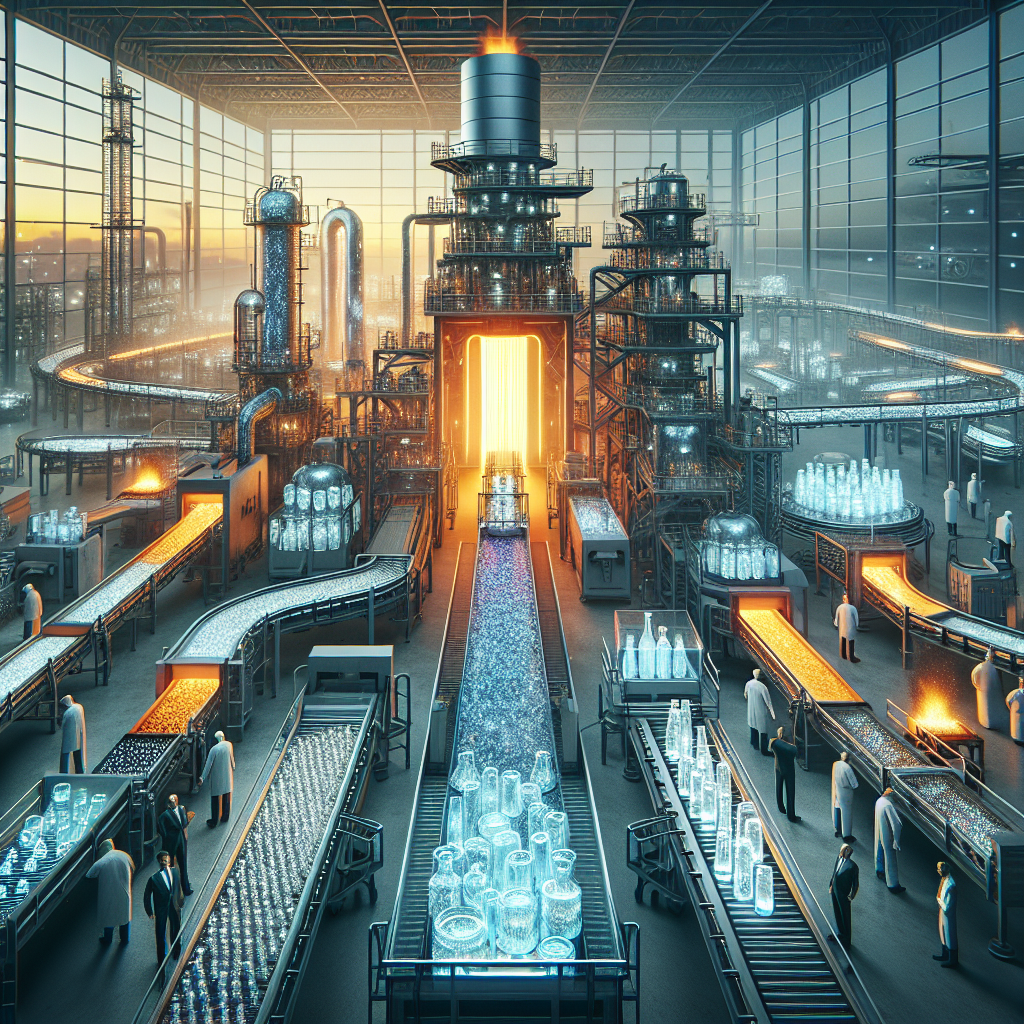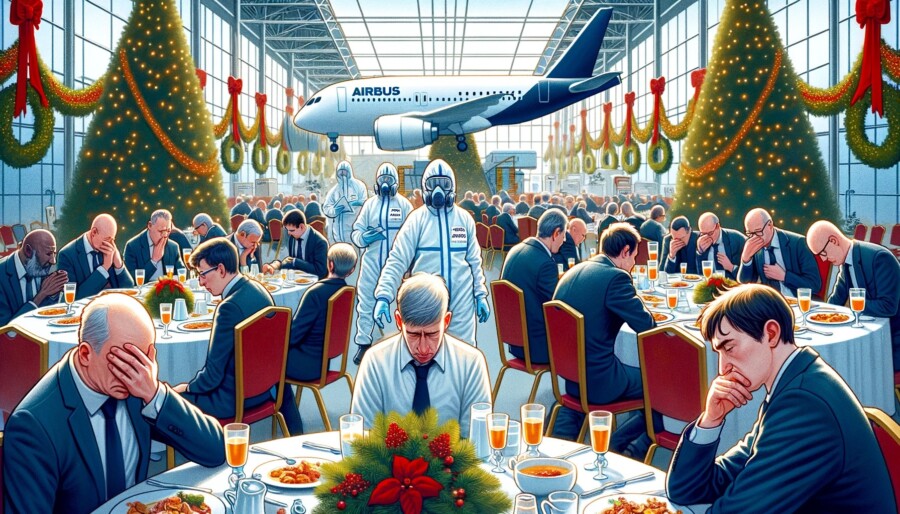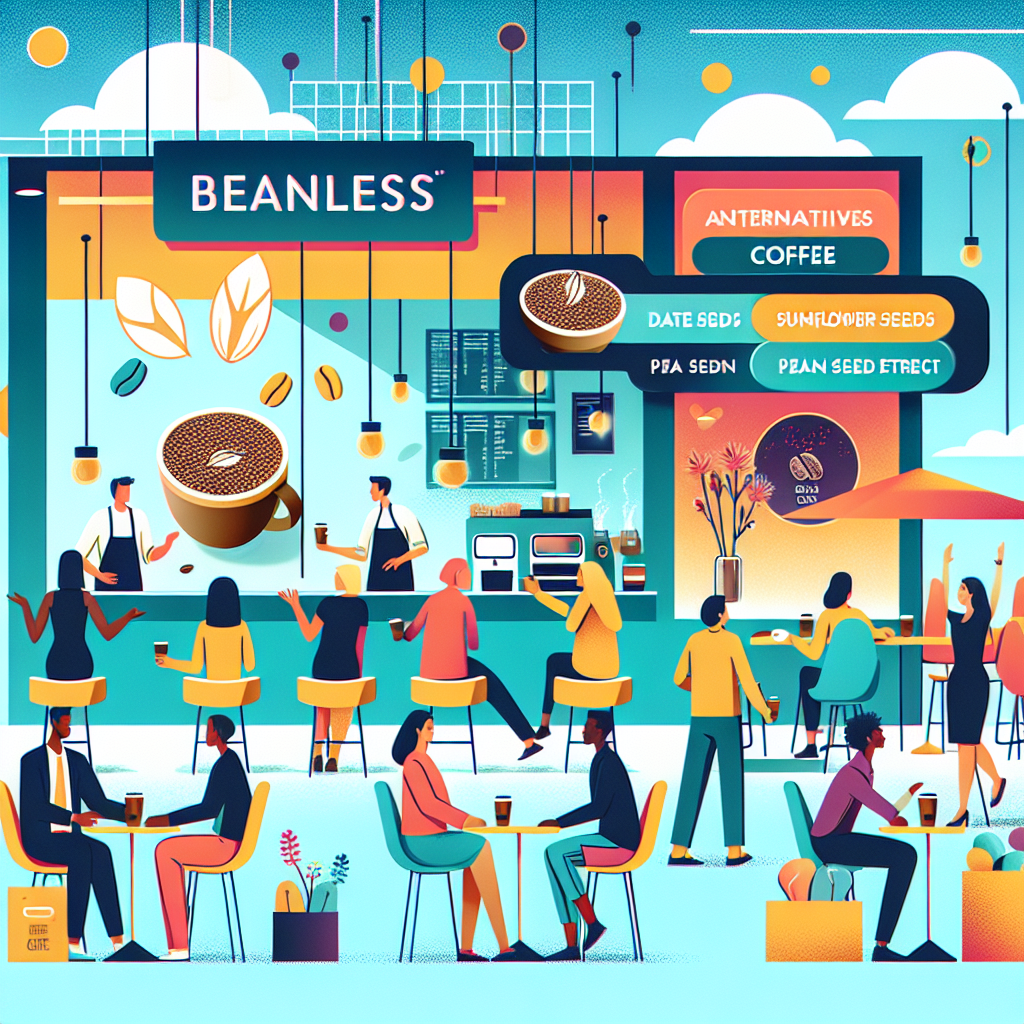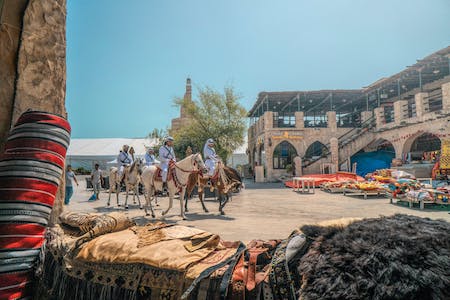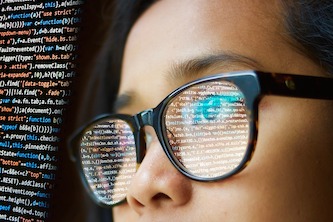The glass container industry is undergoing a revolution due to new regulations and the need to reduce its environmental impact. The European Union is implementing the Packaging & Packaging Waste Regulation (PPWR), which aims to reduce packaging weight and promote sustainability. Glass containers, although 100% recyclable, are relatively heavy compared to plastic or aluminum, leading to concerns that the industry will be unfairly targeted. However, glass recycling itself is energy-intensive, as it requires heating raw materials in a furnace to extremely high temperatures. This process produces CO2 emissions.
To address these challenges, glassmakers are considering switching from gas-fired furnaces to electricity. Electric furnaces, if powered by sustainable sources, can significantly reduce the carbon footprint of glass production. While electric furnaces were previously considered too expensive, the decreasing cost of electricity has made them a viable option. Stoelzle Flaconnage, a glass manufacturer in West Yorkshire, plans to have an electric furnace running by 2026. However, electric furnaces may not be suitable for mass production due to the higher cost of electricity.
Another hurdle for electric furnaces is the need to upgrade electricity grid connections to accommodate the increased demand. Despite these challenges, the glass industry is making progress in developing electric and hybrid furnaces. Ardagh Glass Packaging in Germany is testing a hybrid furnace that runs on 80% sustainable electricity and 20% gas. This furnace has the potential to save 45,000 tonnes of CO2 per year. The industry is also exploring the possibility of replacing natural gas with hydrogen in the future.
In addition to transitioning to more sustainable furnaces, the glass industry is looking to reduce its carbon emissions by using more recycled glass in production. However, obtaining enough recycled glass is a challenge. Some experts suggest that reducing the overall amount of glass packaging may be the most effective solution. A study comparing the environmental impact of glass, plastic, and aluminum containers found that glass had the highest environmental impact, even when recycled.
Overall, the glass container industry is facing pressure to reduce its environmental impact and meet sustainability goals. Switching to electric or hybrid furnaces, increasing the use of recycled glass, and exploring alternative materials may be key strategies in achieving these goals.
Original news source: Why there’s a revolution on the way in glass making (BBC)
🎧 Listen:
Slow
Normal
Fast
📖 Vocabulary:
| 1 | revolution | A dramatic and wide-reaching change |
| 2 | sustainability | The ability to be maintained at a certain rate or level without depleting natural resources |
| 3 | recyclable | Capable of being processed and used again |
| 4 | emissions | The release of gases or substances into the air |
| 5 | furnace | A device used for high-temperature heating |
| 6 | carbon footprint | The total amount of greenhouse gases produced to directly and indirectly support human activities |
| 7 | viable | Feasible or practical for use or implementation |
| 8 | hurdle | An obstacle or difficulty that must be overcome |
| 9 | hybrid | Combining two different elements or technologies |
| 10 | accommodate | To provide enough space or resources for |
| 11 | transitioning | The process of changing or adapting to something new |
| 12 | recycled | Processed and used again, preventing waste of potentially useful materials |
| 13 | environmental impact | The effect or influence of human activities on the natural world |
| 14 | sustainability goals | Objectives aimed at achieving long-term ecological balance |
| 15 | alternative | A different option or choice, especially one that replaces something else |
Group or Classroom Activities
Warm-up Activities:
– News Summary
Instructions: Divide the class into small groups. Provide each group with a copy of the article. Instruct them to read the article and write a summary of the main points in 3-4 sentences. After a designated time, have each group share their summaries with the class.
– Opinion Poll
Instructions: Create a list of questions related to the article and the topic of glass container industry and sustainability. Have the students answer the questions individually. Then, divide them into pairs or small groups to discuss their answers and reach a consensus. Finally, conduct a class discussion where students can share their opinions and debate different perspectives.
– Vocabulary Pictionary
Instructions: Select 10-15 key vocabulary words from the article. Divide the class into teams and give each team a whiteboard or a large sheet of paper. One student from each team will come to the front of the class and you will give them a vocabulary word. They will have to draw a picture on the board or paper to represent the word, while their team members try to guess the word. The team that guesses correctly gets a point. Repeat the process with different students and words until all the vocabulary words have been used.
– Headline Creation
Instructions: Divide the class into small groups. Instruct each group to create a catchy headline for the article that captures the main idea or focus. Give them a few minutes to brainstorm and come up with their headlines. Then, have each group share their headline with the class and explain why they chose it.
– Future Predictions
Instructions: Ask the students to imagine they are experts in the glass container industry. In pairs or small groups, have them discuss and make predictions about the future of the industry based on the information in the article. They should consider factors such as the use of electric furnaces, increased recycling, and alternative materials. After the discussion, each group should present their predictions to the class and explain the reasoning behind them.
🤔 Comprehension Questions:
1. What is the purpose of the Packaging & Packaging Waste Regulation (PPWR) implemented by the European Union?
2. Why are glass containers considered to have a higher environmental impact compared to plastic or aluminum?
3. How can electric furnaces help reduce the carbon footprint of glass production?
4. What is one potential drawback of using electric furnaces for mass production?
5. What is one challenge in transitioning to electric furnaces for the glass industry?
6. What is the potential benefit of using a hybrid furnace that runs on both sustainable electricity and gas?
7. What is one challenge in using more recycled glass in glass production?
8. According to a study mentioned in the article, which type of container has the highest environmental impact, even when recycled?
Go to answers ⇩
🎧✍️ Listen and Fill in the Gaps:
The glass container industry is undergoing a revolution due to new regulations and the need to reduce its environmental impact. The European Union is implementing the Packaging & Packaging Waste Regulation (PPWR), which aims to reduce packaging weight and promote sustainability. (1)______ containers, although 100% recyclable, are relatively heavy compared to plastic or aluminum, leading to concerns that the industry will be unfairly targeted. However, glass recycling itself is energy-intensive, as it requires heating raw materials in a (2)______ to extremely high temperatures. This process (3)______ CO2 (4)______.
To address these challenges, (5)______ are considering switching from gas-fired furnaces to electricity. Electric furnaces, if powered by (6)______ sources, can significantly reduce the carbon (7)______ of glass production. While electric furnaces were previously considered too expensive, the decreasing cost of electricity has made them a viable option. (8)______ Flaconnage, a glass manufacturer in West Yorkshire, plans to have an electric furnace running by 2026. However, electric furnaces may not be suitable for mass production due to the higher cost of electricity.
Another hurdle for electric furnaces is the need to upgrade electricity grid connections to accommodate the increased demand. Despite these challenges, the glass industry is making (9)______ in developing electric and hybrid furnaces. (10)______ Glass Packaging in Germany is testing a hybrid furnace that runs on 80% sustainable electricity and 20% gas. This furnace has the potential to save 45,000 (11)______ of CO2 per year. The industry is also exploring the possibility of replacing natural gas with hydrogen in the future.
In addition to transitioning to more sustainable furnaces, the glass industry is looking to reduce its carbon emissions by using more (12)______ glass in production. However, (13)______ enough recycled glass is a challenge. Some experts suggest that (14)______ the overall amount of glass packaging may be the most effective solution. A study (15)______ the environmental impact of glass, plastic, and aluminum containers found that glass had the highest environmental impact, even when recycled.
Overall, the glass container industry is facing (16)______ to reduce its environmental impact and meet sustainability goals. Switching to electric or hybrid furnaces, increasing the use of recycled glass, and exploring alternative materials may be key strategies in achieving these goals.
Go to answers ⇩
💬 Discussion Questions:
Students can ask a partner these questions, or discuss them as a group.
1. What is the Packaging & Packaging Waste Regulation (PPWR) and why is it important?
2. How would you feel if you had to pay extra for products packaged in glass containers due to the higher cost of electricity?
3. Do you think it is fair for the glass container industry to be targeted for its environmental impact? Why or why not?
4. What is your opinion on using more recycled glass in production to reduce carbon emissions?
5. How do you think the glass industry can obtain enough recycled glass to meet its sustainability goals?
6. Do you think reducing the overall amount of glass packaging is the most effective solution? Why or why not?
7. What other alternative materials do you think the glass industry could explore to reduce its environmental impact?
8. How would you feel if the glass industry transitioned completely to electric furnaces, even if it meant higher costs for consumers?
9. What is your opinion on the idea of replacing natural gas with hydrogen in glass production?
10. Do you think the glass industry should prioritize reducing its carbon emissions over other sustainability goals? Why or why not?
11. How do you think the glass industry can encourage consumers to choose glass packaging over plastic or aluminum?
12. What is your perception of the environmental impact of glass, plastic, and aluminum containers?
13. How do you think the glass industry can address the challenge of upgrading electricity grid connections for electric furnaces?
14. What is your opinion on the use of hybrid furnaces that run on both sustainable electricity and gas?
15. How would you feel if the glass industry was unable to meet its sustainability goals? Why?
Individual Activities
📖💭 Vocabulary Meanings:
Match each word to its meaning.
Words:
1. revolution
2. sustainability
3. recyclable
4. emissions
5. furnace
6. carbon footprint
7. viable
8. hurdle
9. hybrid
10. accommodate
11. transitioning
12. recycled
13. environmental impact
14. sustainability goals
15. alternative
Meanings:
(A) Feasible or practical for use or implementation
(B) Capable of being processed and used again
(C) The ability to be maintained at a certain rate or level without depleting natural resources
(D) Combining two different elements or technologies
(E) Processed and used again, preventing waste of potentially useful materials
(F) A dramatic and wide-reaching change
(G) A different option or choice, especially one that replaces something else
(H) An obstacle or difficulty that must be overcome
(I) To provide enough space or resources for
(J) Objectives aimed at achieving long-term ecological balance
(K) A device used for high-temperature heating
(L) The effect or influence of human activities on the natural world
(M) The release of gases or substances into the air
(N) The process of changing or adapting to something new
(O) The total amount of greenhouse gases produced to directly and indirectly support human activities
Go to answers ⇩
🔡 Multiple Choice Questions:
1. What is the purpose of the Packaging & Packaging Waste Regulation (PPWR)?
(a) To increase the weight of glass containers
(b) To target the glass container industry unfairly
(c) To make glass containers 100% recyclable
(d) To reduce packaging weight and promote sustainability
2. Why are glass containers considered heavy compared to plastic or aluminum?
(a) Because they are not recyclable
(b) Because they require heating in a furnace
(c) Because they produce CO2 emissions
(d) Because they are made of glass
3. What is one potential solution for reducing the carbon footprint of glass production?
(a) Increasing the weight of glass containers
(b) Switching from gas-fired furnaces to electric furnaces
(c) Using more plastic or aluminum containers
(d) Recycling glass at a higher temperature
4. Why have electric furnaces become a viable option for glassmakers?
(a) Electric furnaces are more energy-intensive
(b) The cost of electricity has decreased
(c) Electric furnaces are lighter than gas-fired furnaces
(d) The European Union has mandated their use
5. What is one challenge of using electric furnaces for mass production?
(a) The higher cost of electricity
(b) The need to upgrade electricity grid connections
(c) The decreasing cost of electricity
(d) The potential for higher CO2 emissions
6. What is Ardagh Glass Packaging testing as a potential furnace option?
(a) A hybrid furnace that runs on 80% sustainable electricity and 20% gas
(b) A gas-fired furnace
(c) An electric furnace
(d) A furnace that runs on hydrogen
7. What is one strategy the glass industry is considering to reduce its carbon emissions?
(a) Increasing the overall amount of glass packaging
(b) Transitioning to gas-fired furnaces
(c) Using more recycled glass in production
(d) Exploring alternative materials such as plastic or aluminum
8. According to a study, which type of container had the highest environmental impact, even when recycled?
(a) Plastic containers
(b) Aluminum containers
(c) Glass containers
(d) All containers had the same environmental impact
Go to answers ⇩
🕵️ True or False Questions:
1. Glassmakers are considering switching from gas-fired furnaces to electric furnaces to reduce the carbon footprint of glass production.
2. Stoelzle Flaconnage, a glass manufacturer in East Yorkshire, plans to have a gas furnace running by 2026.
3. Glass recycling is an energy-intensive process that produces CO2 emissions.
4. Glass containers are heavier compared to plastic or aluminum, which raises concerns about their environmental impact.
5. The glass industry is not exploring the use of more recycled glass and alternative materials to reduce its environmental impact.
6. The European Union is implementing regulations to reduce the environmental impact of the glass container industry.
7. The increasing cost of electricity has made electric furnaces a viable option for glass manufacturers.
8. Upgrading electricity grid connections is unnecessary to accommodate the increased demand for electric furnaces in the glass industry.
Go to answers ⇩
📝 Write a Summary:
Write a summary of this news article in two sentences.
Check your writing now with the best free AI for English writing!
Writing Questions:
Answer the following questions. Write as much as you can for each answer.
Check your answers with our free English writing assistant!
1. What is the purpose of the Packaging & Packaging Waste Regulation implemented by the European Union?
2. How can electric furnaces help reduce the carbon footprint of glass production?
3. What are some challenges associated with using electric furnaces in the glass industry?
4. What is one potential solution for reducing the overall environmental impact of the glass container industry?
5. What are some strategies that the glass industry is considering to meet sustainability goals?
✅ Answers
🤔✅ Comprehension Question Answers:
1. The purpose of the Packaging & Packaging Waste Regulation (PPWR) implemented by the European Union is to reduce packaging weight and promote sustainability.
2. Glass containers are considered to have a higher environmental impact compared to plastic or aluminum because they are relatively heavy, leading to higher transportation emissions. Additionally, glass recycling requires high temperatures and energy, resulting in CO2 emissions.
3. Electric furnaces can help reduce the carbon footprint of glass production if powered by sustainable sources of electricity. This is because they do not rely on gas-fired furnaces, which produce CO2 emissions.
4. One potential drawback of using electric furnaces for mass production is the higher cost of electricity compared to gas. This may make electric furnaces less economically feasible for large-scale glass production.
5. One challenge in transitioning to electric furnaces for the glass industry is the need to upgrade electricity grid connections to accommodate the increased demand. This infrastructure upgrade can be costly and time-consuming.
6. The potential benefit of using a hybrid furnace that runs on both sustainable electricity and gas is the ability to significantly reduce CO2 emissions. The Ardagh Glass Packaging hybrid furnace, for example, has the potential to save 45,000 tonnes of CO2 per year.
7. One challenge in using more recycled glass in glass production is obtaining enough recycled glass. The availability and collection of recycled glass can vary, making it difficult for glass manufacturers to rely solely on recycled materials.
8. According to the study mentioned in the article, glass containers have the highest environmental impact, even when recycled, compared to plastic and aluminum containers.
Go back to questions ⇧
🎧✍️✅ Listen and Fill in the Gaps Answers:
(1) Glass
(2) furnace
(3) produces
(4) emissions
(5) glassmakers
(6) sustainable
(7) footprint
(8) Stoelzle
(9) progress
(10) Ardagh
(11) tonnes
(12) recycled
(13) obtaining
(14) reducing
(15) comparing
(16) pressure
Go back to questions ⇧
📖💭✅ Vocabulary Meanings Answers:
1. revolution
Answer: (F) A dramatic and wide-reaching change
2. sustainability
Answer: (C) The ability to be maintained at a certain rate or level without depleting natural resources
3. recyclable
Answer: (B) Capable of being processed and used again
4. emissions
Answer: (M) The release of gases or substances into the air
5. furnace
Answer: (K) A device used for high-temperature heating
6. carbon footprint
Answer: (O) The total amount of greenhouse gases produced to directly and indirectly support human activities
7. viable
Answer: (A) Feasible or practical for use or implementation
8. hurdle
Answer: (H) An obstacle or difficulty that must be overcome
9. hybrid
Answer: (D) Combining two different elements or technologies
10. accommodate
Answer: (I) To provide enough space or resources for
11. transitioning
Answer: (N) The process of changing or adapting to something new
12. recycled
Answer: (E) Processed and used again, preventing waste of potentially useful materials
13. environmental impact
Answer: (L) The effect or influence of human activities on the natural world
14. sustainability goals
Answer: (J) Objectives aimed at achieving long-term ecological balance
15. alternative
Answer: (G) A different option or choice, especially one that replaces something else
Go back to questions ⇧
🔡✅ Multiple Choice Answers:
1. What is the purpose of the Packaging & Packaging Waste Regulation (PPWR)?
Answer: (d) To reduce packaging weight and promote sustainability
2. Why are glass containers considered heavy compared to plastic or aluminum?
Answer: (d) Because they are made of glass
3. What is one potential solution for reducing the carbon footprint of glass production?
Answer: (b) Switching from gas-fired furnaces to electric furnaces
4. Why have electric furnaces become a viable option for glassmakers?
Answer: (b) The cost of electricity has decreased
5. What is one challenge of using electric furnaces for mass production?
Answer: (a) The higher cost of electricity
6. What is Ardagh Glass Packaging testing as a potential furnace option?
Answer: (a) A hybrid furnace that runs on 80% sustainable electricity and 20% gas
7. What is one strategy the glass industry is considering to reduce its carbon emissions?
Answer: (c) Using more recycled glass in production
8. According to a study, which type of container had the highest environmental impact, even when recycled?
Answer: (c) Glass containers
Go back to questions ⇧
🕵️✅ True or False Answers:
1. Glassmakers are considering switching from gas-fired furnaces to electric furnaces to reduce the carbon footprint of glass production. (Answer: True)
2. Stoelzle Flaconnage, a glass manufacturer in East Yorkshire, plans to have a gas furnace running by 2026. (Answer: False)
3. Glass recycling is an energy-intensive process that produces CO2 emissions. (Answer: True)
4. Glass containers are heavier compared to plastic or aluminum, which raises concerns about their environmental impact. (Answer: True)
5. The glass industry is not exploring the use of more recycled glass and alternative materials to reduce its environmental impact. (Answer: False)
6. The European Union is implementing regulations to reduce the environmental impact of the glass container industry. (Answer: True)
7. The increasing cost of electricity has made electric furnaces a viable option for glass manufacturers. (Answer: False)
8. Upgrading electricity grid connections is unnecessary to accommodate the increased demand for electric furnaces in the glass industry. (Answer: False)
Go back to questions ⇧



